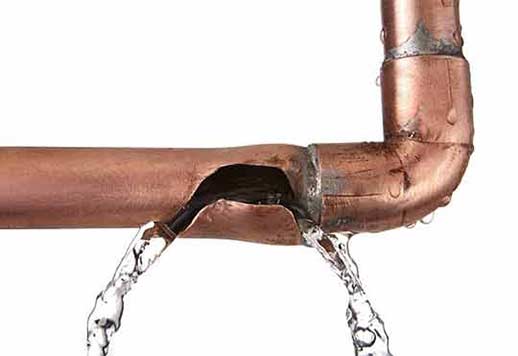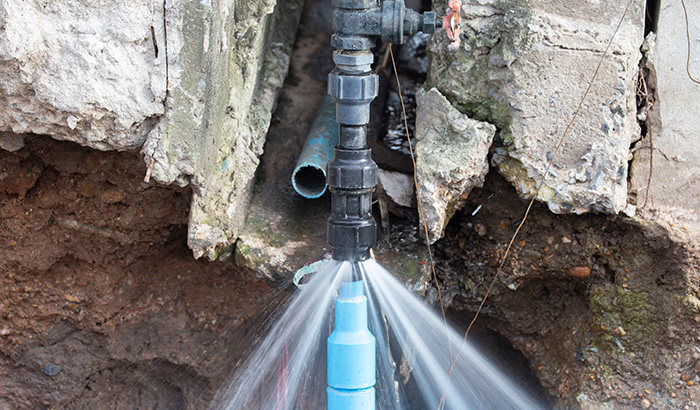Burst Pipe Repair: Professional Solutions to Minimize Damage and Costs
Avoiding Burst Piping: Crucial Tips to Safeguard Your Pipes
Preventing ruptured pipelines is a vital concern for property owners, specifically throughout chillier months when the risk of freezing is increased. Carrying out tactical procedures such as correct insulation, routine assessments, and keeping constant interior temperatures can substantially lower the likelihood of pipe failing. Furthermore, recognizing emergency situation treatments equips house owners to react swiftly to potential plumbing concerns. However, several are unaware of the specific vulnerabilities that their pipelines might deal with. Checking out these vulnerabilities can offer important understandings into protecting your pipes system properly.
Understand Pipe Vulnerabilities
Comprehending pipeline vulnerabilities is essential for reliable plumbing upkeep and protecting against expensive damage. Numerous aspects add to the sensitivity of pipes to ruptureds, consisting of material make-up, age, and environmental conditions. Older pipes, specifically those made from galvanized steel or polybutylene, frequently weaken in time, resulting in raised danger of ruptures and leakages.
Temperature level variations can likewise significantly influence pipeline honesty. In chillier environments, water trapped in pipes can ice up, expanding and putting in stress on the pipe walls, which might inevitably lead to a burst. In addition, high water pressure can strain pipes, especially at bends and joints, heightening the probability of failure.

Insulate Pipeline Effectively
Proper insulation of pipelines is crucial for avoiding freezing and succeeding ruptureds throughout winter (burst pipe). Shielding your pipes system effectively safeguards against temperature level drops that can bring about pricey damages. Begin by recognizing prone areas where pipes are subjected to outside temperatures, such as cellars, attics, and exterior walls
Use foam pipeline insulation sleeves or cover insulation tape around these locations to give a safety obstacle. Make sure that all areas of the pipelines, particularly those with restricted warm exposure, receive ample insulation. Pay special attention to joints and installations, as these are a lot more vulnerable to freezing.
When shielding, it's necessary to pick materials that meet regional building codes and are suitable for the certain atmosphere. For instance, fiberglass insulation is often advised for its thermal resistance residential properties - burst pipe. Additionally, consider using warmth cords or tape in extreme conditions, which can be plugged in to supply additional heat
Frequently examine insulated pipelines for any indicators of wear or damages, as jeopardized insulation can diminish its efficiency. By taking these proactive actions, you substantially minimize the risk of pipeline bursts, ensuring a reliable plumbing system throughout the wintertime months.
Maintain Constant Temperature Level
A secure indoor temperature is important for preventing burst pipes during the cold months. When temperatures decrease, water within pipelines can ice up, developing and expanding pressure that may eventually cause the pipes to burst. To alleviate this threat, home owners ought to keep a regular temperature level throughout their space, preferably no lower than 55 ° pop over to this web-site F(13 ° C)Utilizing a programmable thermostat can help take care of indoor temperatures properly, making certain that spaces with pipes continue to be warm also when your home is vacant. Pay unique interest to areas that are much more at risk to cold, such as garages, basements, and attics. Keeping cabinet doors open under sinks can also allow warmer air from the home to distribute around pipes.
This minor circulation of water can protect against cold by minimizing stress within the pipes. By executing these approaches, house owners can considerably minimize the threat of pipeline ruptureds and secure their pipes systems against the severe winter aspects.
Routinely Examine Plumbing
Regular examinations of pipes systems are important for stopping burst pipelines and maintaining total home stability. During these evaluations, it is vital to check out noticeable pipes for signs of corrosion, leaks, or wear.
Additionally, evaluating connections and joints is crucial, as these factors are often vulnerable to leakages. Home owners should additionally examine water pressure levels, as extreme stress can strain the pipes system and boost the threat of pipeline bursts.
Take into consideration organizing professional plumbing inspections at the very least once a year, specifically before wintertime, to guarantee your system is prepared for cooler temperatures. Normal inspections not just assist in identifying instant worries however additionally foster long-lasting maintenance methods that can improve the lifespan of your pipes system. By being proactive in your approach, you can guard your home versus the disruptive and pricey repercussions of ruptured pipes. Prioritizing plumbing examinations is an investment in your house's health and security.
Know Emergency Situation Treatments
Understanding emergency procedures is vital for each house owner, specifically after performing regular pipes inspections. Being prepared for a plumbing emergency situation can considerably mitigate damage and save costs. Locate your primary water shut-off valve; it is generally located near the water meter or where the main line enters your home. Acquaint yourself with its procedure, as turning off the water rapidly can stop comprehensive flooding.
Next, keep essential devices helpful. A plumbing emergency situation kit ought to include a wrench, image source bettor, and towels, in addition to a flashlight and a bucket for little leakages. Additionally, take into consideration having the get in touch with information for a trusted plumbing professional easily available, must the circumstance intensify beyond your control.
If you spot a leakage or burst pipeline, immediately shut off the supply of water and notify your plumbing professional. In addition, document the damages with photos for insurance policy functions. burst pipe. Recognize the indicators of potential pipes issues, such as unusual water pressure fluctuations or damp areas on wall surfaces
Ultimately, positive understanding and swift activity are essential in taking care of plumbing emergency situations, ensuring your home continues to be protected and lessening potential damage.

Conclusion
In conclusion, avoiding ruptured pipelines requires a diverse method that includes understanding pipeline vulnerabilities, correct insulation, preserving constant indoor temperatures, normal assessments, and knowledge of emergency procedures. By implementing these crucial approaches, the danger of plumbing failures can be dramatically minimized, thereby making sure the long life and efficiency of the pipes system. Proactive actions not just secure versus prospective damages yet additionally add to total water preservation and the security of residential or commercial property.
In cooler climates, water entraped in pipes can ice up, putting in and increasing pressure on the pipeline walls, which may ultimately lead to a burst. When temperature levels decline, water within pipes can ice up, expanding and producing stress that might ultimately trigger the pipelines to ruptured. By carrying out these strategies, home owners can considerably minimize the danger of pipe bursts and secure their pipes systems against the rough wintertime components.
